|
the fiddle yard
We had been unhappy with the operation of
the front loading traverser which had a habit of slightly changing
dimensions due to temperature changes and tripping up trains. We also
found that visitors at exhibitions hated us obscuring the hotel with the
lift up lid when operating it. The traverser has now been removed.
Having converted to DCC we realised that we
could automate the main line running for exhibitions. This needed a six
road fiddle yard. All points are now to be controlled by 'loco-net'.
The aim is to allow different trains to
arrive from each direction at County Gate, cross and the disappear on
their way. The automation is by Railroad & Co software.
The first fiddle yard was supported on two
steel brackets from the display stands. Sadly, operation showed up some
flaws which has now resulted in the construction of a new unit.
The problems were
1. The fiddle table was too deep and could be distorted
if a person leant on it. This resulted in the derailment of trains at the
baseboard joint.
2. Despite being 7'6" long, some of the
loops were too short for comfort and restricted the choice of trains to be
run.
3. The Peco 12" Crazytrack turnouts
caused a number of derailments.
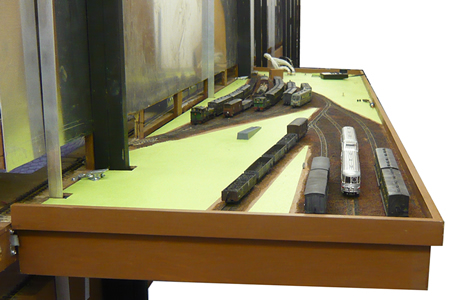
the old fiddle yard

Having gained experience in operation, the
existing fiddle yard was withdrawn following our exhibition at Wigan in
December. The new yard would be much narrower but span the length
of two long baseboards (15') in two sections. It is supported by
removable brackets attached to the metal display stands. A third
board is also be provided behind the hotel section which supports
the laptop computer and gives us some space to work.
The pointwork is 18" radius N gauge
track and small track sections with movable fishplates join the track
to the main board. Additional siding are also provided at the hotel end of
the board.
The advantage to this system is that apart
from having longer loops, the trains are much closer to the hotel end thus
reducing off scene running time. Another important factor
is that the new narrow boards afford us much better access behind the
scenes being substantially narrower.

the new 15 ft yard under construction
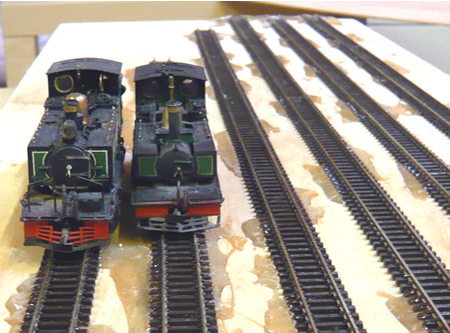
This does show how tight clearances are on
the new yard. The track will be ballasted when all wiring is complete.
Sadly, I forgot about the duckouts on the brake coaches. I was forced to
remove the ones on the blind side.
One of the problems with the first fiddle
yard were the oblique angled track joints between the layout and the yard.
The smallest variance would result in derailments and constant attention
was needed to preserve alignment during running. This time. the connecting
tracks are removable lengths of track with right angled joints. The
ends of the fixed track both on the layout and on the yard are soldered on
to PCB board, (insulated by a saw cut).
The rails have 'mini bolts' soldered to them
in 1.5mm brass tube and 1mm brass rod.


Some revamping of the wiring was required.
We finally had to provide a CDU for each point. This was necessary to
enable route selection in automation mode. The CDUs are fed by 3
transformers!
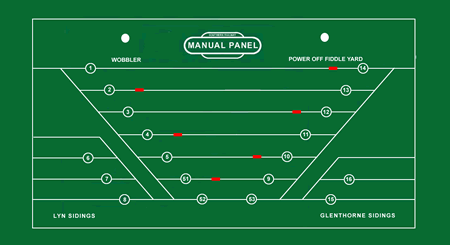
the new manual panel for the fiddle yard
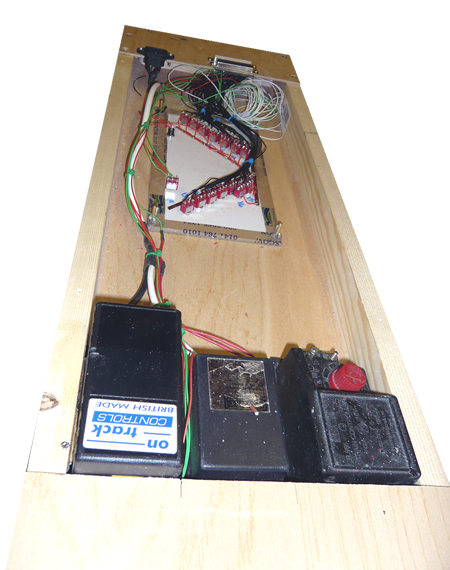
board 1 (behind hotel) which has the
manual control panel and transformers - click on image to enlarge

the entire fiddle yard boards installed
with register pins and the rest of the track laying can be completed

the wiring complete on two of the
boards
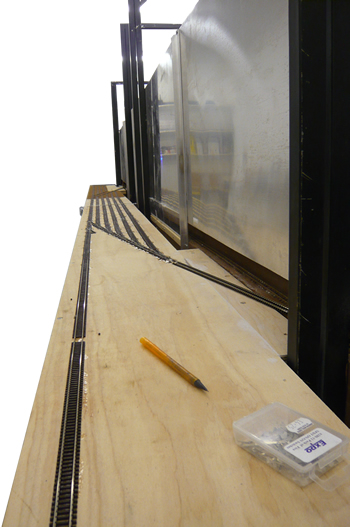
most of the trackwork now laid
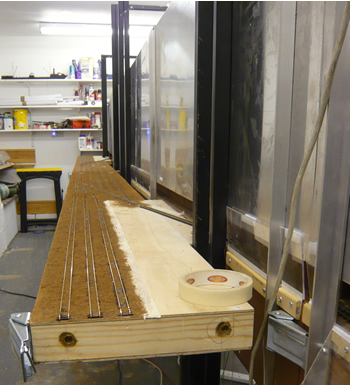
The completed ballasted trackwork now laid
Some may consider it strange that the fiddle
yard is ballasted. This is done to stabilise the track when taken to
venues of very different temperatures. It also looks a whole lot better!

the fiddle yard being tested with a
railcar motor unit - the edging and finishing still remains to be done
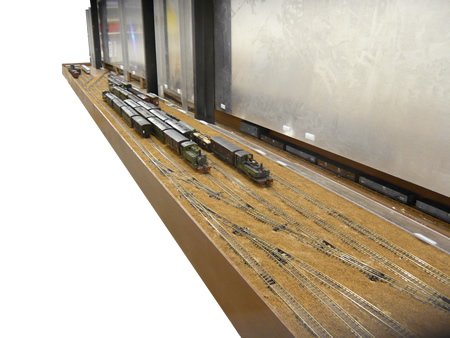
the fiddle yard populated

built in track cleaner on fiddle yard

|